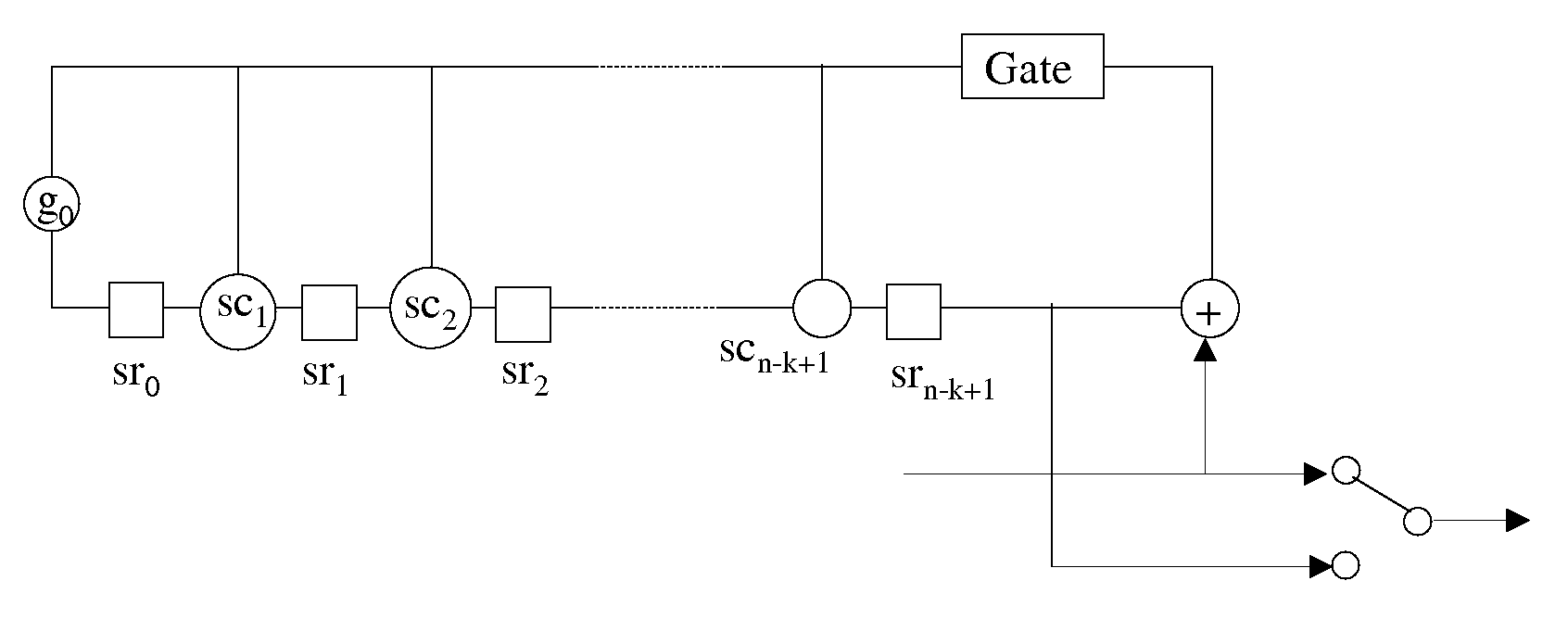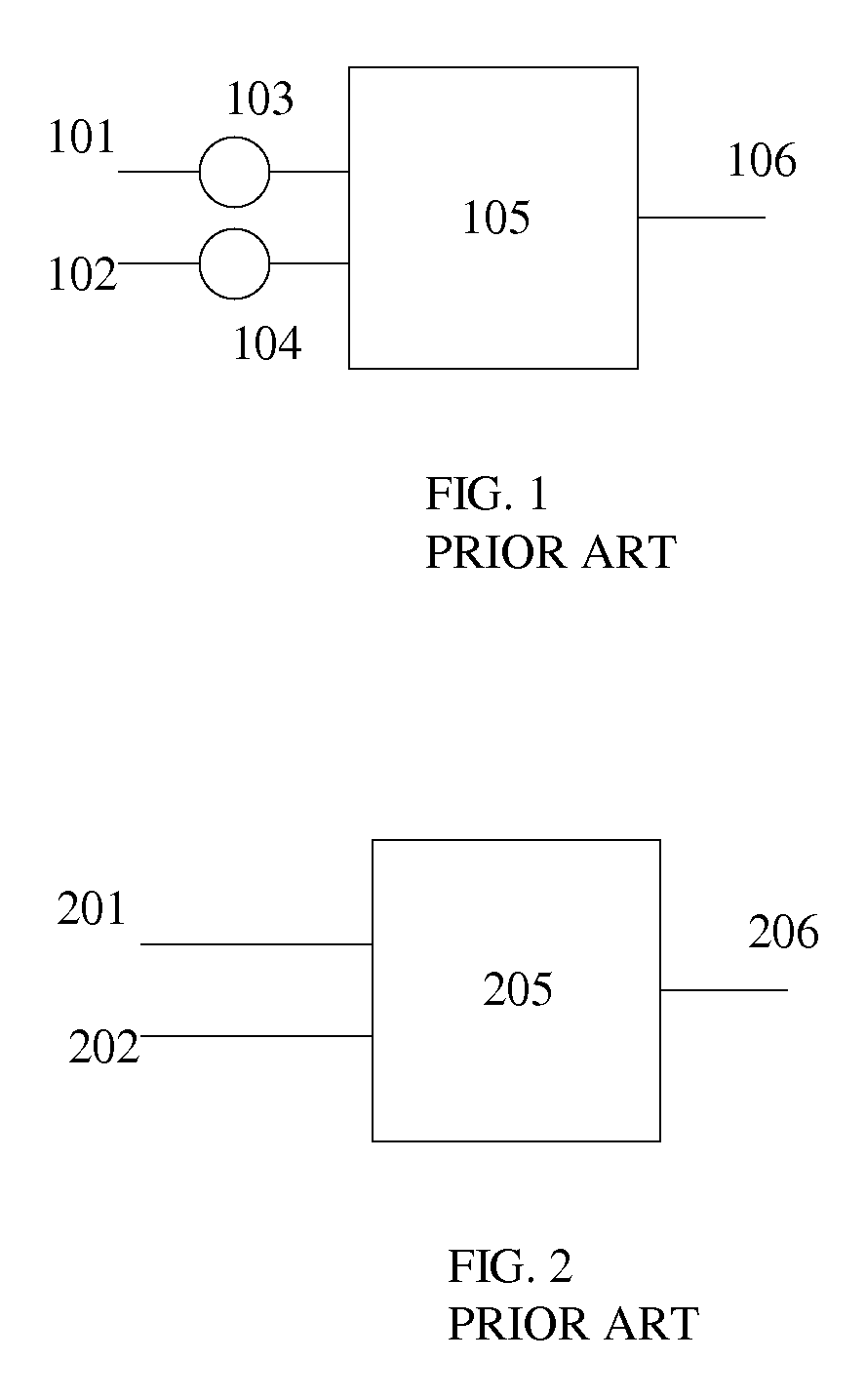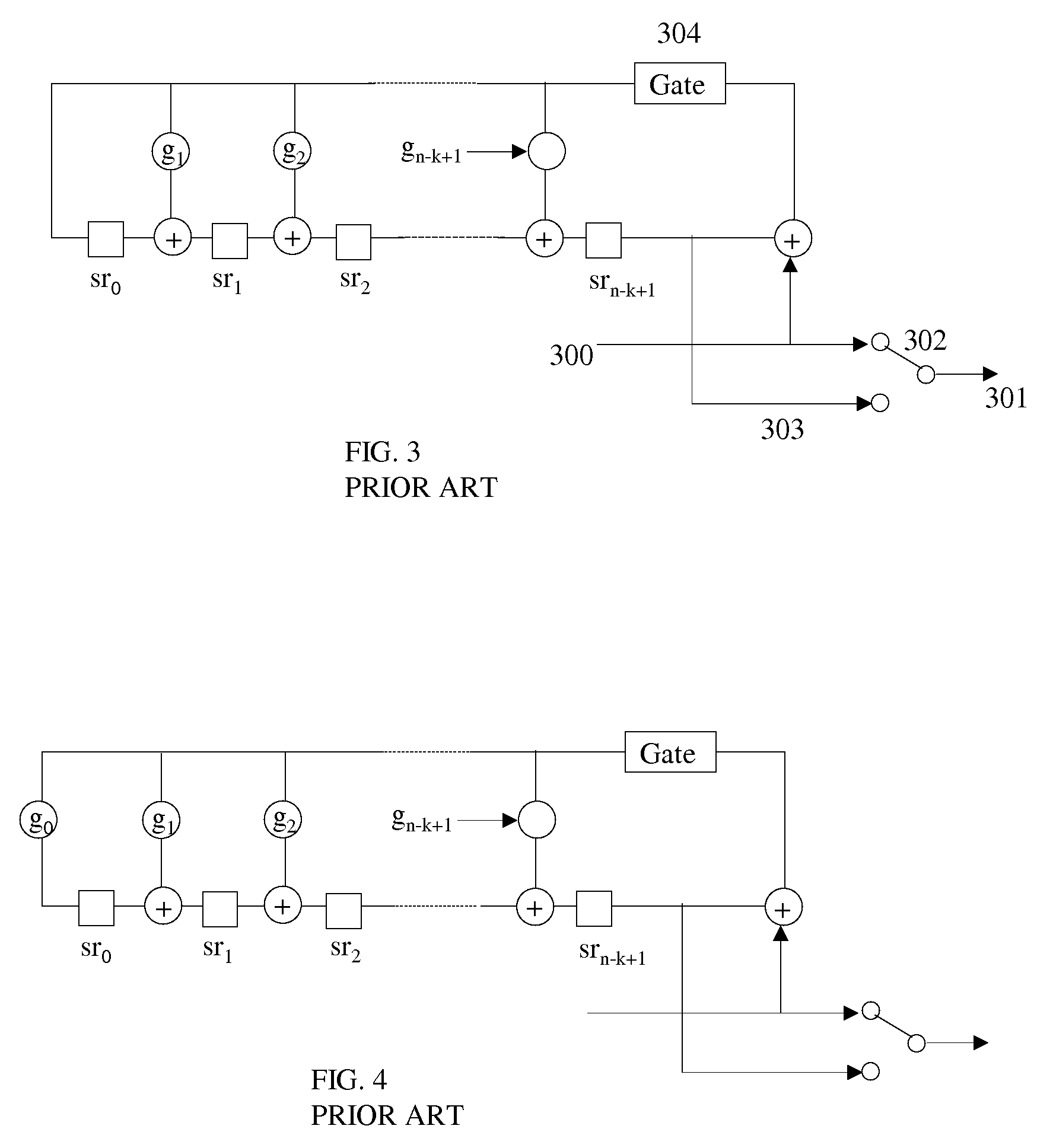Methods and apparatus in finite field polynomial implementations
a finite field polynomial and implementation technology, applied in the field of finite field polynomial arithmetic expression implementation, can solve the problems of increasing the clock speed of calculations and more circuitry, increasing the cost of prior art multi-valued lfsrs, increasing the cost of power consumption and less efficiency, and increasing the cost of machine calculations. , to achieve the effect of reducing the required clock speed, fewer components, and improving efficiency
- Summary
- Abstract
- Description
- Claims
- Application Information
AI Technical Summary
Benefits of technology
Problems solved by technology
Method used
Image
Examples
first embodiment
[0152]There are different ways to implement the above truth table. In a first embodiment one may use addressable memory wherein (u,v,w) is the address of a memory content. The memory content is then the value of state of the truth table.
second embodiment
[0153]In a second embodiment one may use n-valued inverters and individually controlled n-valued switches. The method for implementing a 2 input / single output n-valued logic function has been disclosed in U.S. Non-Provisional patent application Ser. No. 10 / 935,960 filed on Sep. 8, 2004 entitled: TERNARY AND MULTI-VALUE DIGITAL SIGNAL SCRAMBLERS, DESCRAMBLERS AND SEQUENCE GENERATORS, which is herein incorporated by reference in its entirety. It also has been further explained by the inventor in U.S. patent application Ser. No. 11 / 000,218 filed on Nov. 30, 2004 entitled: SINGLE AND COMPOSITE BINARY AND MULTI-VALUED LOGIC FUNCTIONS FROM GATES AND INVERTERS, which is herein incorporated by reference in its entirety. This method applies an individually controlled n-valued switch of which an example is shown in FIG. 26. This n-valued switch has an input 2601 and an output 2602 and a control input 2603. The switch itself is represented by a circle 2604 with a horizontal or a vertical line ...
PUM
 Login to View More
Login to View More Abstract
Description
Claims
Application Information
 Login to View More
Login to View More - R&D
- Intellectual Property
- Life Sciences
- Materials
- Tech Scout
- Unparalleled Data Quality
- Higher Quality Content
- 60% Fewer Hallucinations
Browse by: Latest US Patents, China's latest patents, Technical Efficacy Thesaurus, Application Domain, Technology Topic, Popular Technical Reports.
© 2025 PatSnap. All rights reserved.Legal|Privacy policy|Modern Slavery Act Transparency Statement|Sitemap|About US| Contact US: help@patsnap.com



